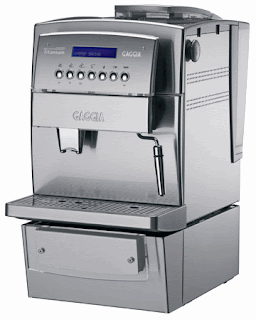 The problem:
The problem: Even though it is possible to get really great micro-foam results when steaming with Gaggia, the second pitcher results aren't nearly as good as the first.
The reason:
Gaggias (and probably all other single-boilers) only introduce new water into the boiler while brewing, but not while steaming. Hence, steam-pressure just keeps dropping off until the boiler is empty (indeed the manual warns about not steaming for more than five minutes at a time).
The solution:
Unfortunately, you'll have to prepare each latte or cappuccino individually. In other words; pull one shot, steam a small pitcher for the first cappuccino or latte, then run some water through the group in brew mode and pull the second shot, then steam the second pitcher. Otherwise, you'll run out of steam and your shots will fade and get cold by the time you've steamed both pitchers.
Alternatively:
You can pull a double-shot into two cups and just steam less milk for each. With a bit of practice, you should be able to steam ten ounces or so in one session - so you can make two traditional single cappuccinos without having to steam two pitchers of milk. To do this, you may also want to consider replacing the Gaggia frother with a Saeco, minus the outer sleeve (the inner part of the Gaggia wand is too short to use by itself). It's the plastic thingy that attaches to the steam-wand. The advantage of the Saeco is that the inner part with the steam-hole at the end is almost the same length as the device itself, whereas in the Gaggia it is much shorter. With a bit of practice you can make pretty decent micro-foam with this wand. Good luck!












